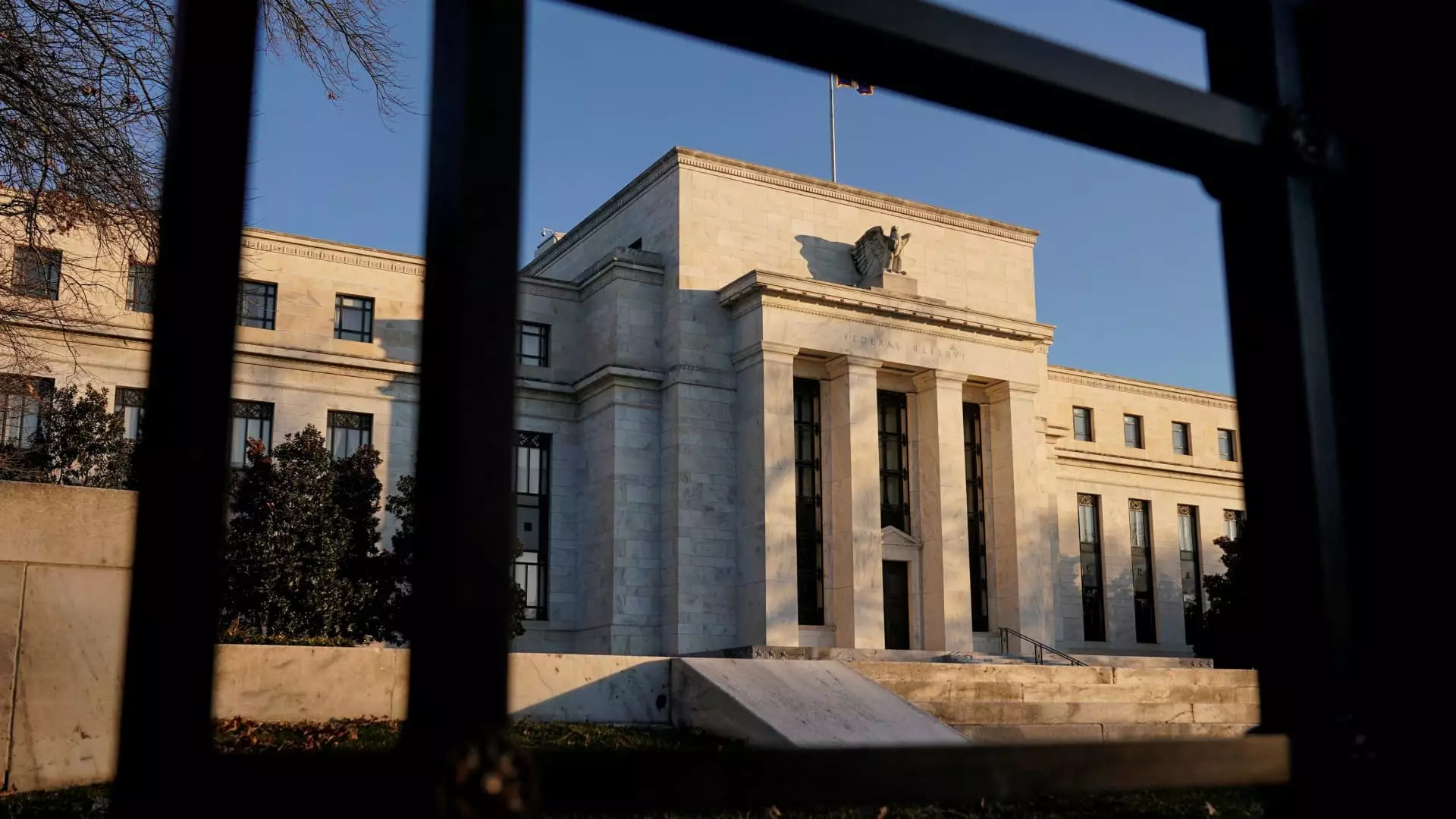The decision by the Federal Reserve to keep interest rates unchanged reflects an uneasy balance in an economy grappling with the ramifications of President Trump’s controversial tariff policies. As we navigate through these turbulent waters, the divergence of consumer sentiment and financial reality underscores the wider implications of ongoing trade tensions. Economic forecasts are increasingly pessimistic, influenced by a mixture of rising production costs and consumer prices, pushing many Americans closer to the tipping point of financial distress.
Today, tariffs on essential commodities such as aluminum, steel, and oil threaten to stifle growth and make life increasingly expensive for the average American family. Brett House, an economics expert at Columbia Business School, aptly noted that these tariffs are not isolated incidents; rather, they create a ripple effect that affects the economy on a broader scale. The current predicament isn’t merely about trade deficits; it’s about the very foundation of American financial stability, which is under siege.
The Price of Uncertainty
With the National Economic Council director Kevin Hassett acknowledging “some uncertainty” as the country’s tariff agenda unfolds, there is an underlying rhetoric that raises eyebrows. Is it prudent to gamble with the economic well-being of millions based on fluctuating tariff strategies? The Fed’s cautious approach, driven by external pressures from tariffs, shows that even a central banking institution—designed to stabilize and facilitate growth—can fall victim to the unpredictable nature of policy decisions that ultimately stem from political agendas.
House’s assertion that the Fed is in a “wait-and-see mode” does not inspire confidence among consumers. An economy riddled with unpredictability is a breeding ground for fear. Recent data show that while inflation has taken a brief respite, the shadow of escalating trade wars looms large, and those fears ripple across every sector, from retail to housing.
Consumer Costs Are on the Rise
As economic indicators fluctuate, it is the consumer who bears the brunt of economic policy decisions. The federal funds rate, which governs various borrowing and savings rates, is anchored in a climate where prices are rising yet nominal wages are stagnant. Despite a recent adjustment downward in rates, borrowing costs for Americans remain persistently high, creating a burden on household budgets.
Greg McBride, chief financial analyst at Bankrate.com, articulates the ongoing plight of consumers, stating that pressure on household budgets is “unrelenting.” When essential borrowing costs remain high, even small reductions in interest rates feel less consequential. True relief for struggling consumers could come from sustained decreases in credit card interest rates, which have seen some moderation but still hover at alarmingly elevated figures. It is farcical to think that economic prosperity can resume while consumer confidence is eroded by increased borrowing costs.
The Ripple Effect on Housing and Auto Markets
The interconnectedness of financial markets means that every policy decision sends shockwaves throughout the economy, affecting both housing and automotive markets. Mortgage and auto loan rates typically mirror the Fed’s actions, yet uncertainties stemming from tariffs continuously undermine consumer behavior in these sectors. McBride’s observations about falling mortgage rates due to fears of economic weakness highlight a broader issue: the erosion of consumer optimism is not merely a market fluctuation but a warning sign that should not be ignored.
It’s troubling that while mortgage rates for homes are trending down, the associated costs remain exorbitantly high. The average 30-year fixed-rate mortgage, now at 6.78%, does not inspire confidence for potential homebuyers who are still grappling with elevated prices stemming from inflationary pressures. Similarly, while auto loan rates show some decline, the overall cost of owning a vehicle continues to rise due to rampant price hikes attributed to tariffs.
Student Loans and Saving Rates: A Mixed Bag
On the student loan front, fixed rates maintain a semblance of stability while consumers navigate ever-increasing costs of higher education. Borrowers taking out federal loans for the 2024-25 academic year face significantly increased rates. Historically, educational investment is seen as a pathway to upward mobility, yet it now carries a hefty price tag in a potentially unstable economic environment.
On a positive note, however, the savings landscape has remained relatively appealing. Although the yields on high-interest savings accounts have decreased slightly, they still outpace general inflation. For many, this relatively attractive compensation for savings provides a necessary cushion in these uncertain times. Yet, even in this small victory, one cannot ignore the looming shadow of tariffs and their broader implications for the purchasing power of many Americans.
Amidst the complex interplay of tariff policies and economic realities, it becomes evident that we are far from reaching a sustainable economic equilibrium. The question remains: can we afford to ignore the undercurrents that threaten to destabilize the very fabric of our economy?


Leave a Reply